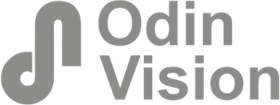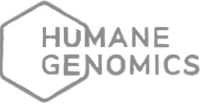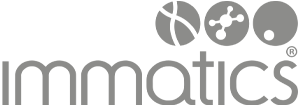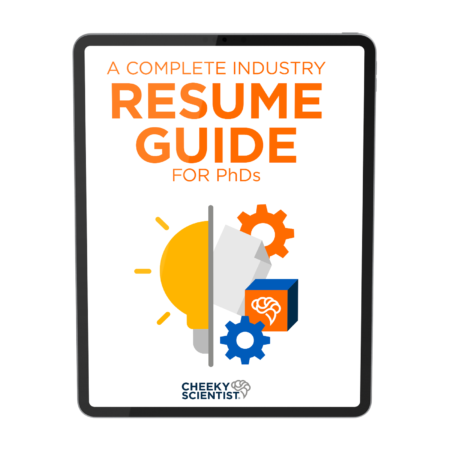Models Of Open Innovation And Emerging Alliances In The Biotech And Biopharma Industry

It wasn’t until my thesis was submitted that I started planning my transition out of academia.
I got a very late start.
As a result, I had many moments of frustration.
Most of which were caused by long work hours, little pay, and no appreciation.
But I kept working at the bench: it was all I knew how to do.
There was no time for anything else.
To be honest, I didn’t think there was anything else “out there”.
I thought benchwork was all there was for me.
I thought it was my only option as a PhD.
Then I attended my first networking event with industry professionals.
Networking was scary at first, but over time I became comfortable.
Before I knew it, I was having a conversation with a couple of CEOs from local startup companies and handling myself fine.
The CEOs were chatting about the decrease in number of M&A given the increasing trend of the OI model.
Huh? I had no idea what they were talking about.
M&A? OI?
It felt like they were speaking a different language.
I’m a PhD — shouldn’t I know this?
Awkwardness set in.
I wondered if I should slowly back away and hope they didn’t notice as I gradually disappeared.
Suddenly, I had the urge to spill wine on my shirt so I could leave.
Why was I so uncomfortable?
I was uncomfortable because the only topics I was comfortable discussing were topics related to my PhD dissertation.
When I got home, I looked up some of the terms they were talking about, like M&A and OI.
I found out they were discussing the latest industry trends.
They were also discussing very common activities in industry.
I immediately modified my strategy and began focusing on learning the business behind biopharma.
I used that knowledge to effectively build my network and gain referrals.
Then, when I interviewed with hiring managers and recruiters, they were impressed with my business acumen, more so than the technical skills that filled my resume.
Without taking the time to learn this industry knowledge, I would not have secured my first industry job after graduate school.
Why PhDs Must Learn Core Business Concepts
The biotechnology and biopharmaceutical industries provided more than 850,000 direct jobs, contributing more than $1.2 trillion in economic output in the United States in 2014, according to research by the Pharmaceutical Research and Manufacturers of America.
Meanwhile, a 2014 report from the National Science Foundation found that, after an average of 10 years of study and $70,000 of combined undergraduate and graduate student loan debt, 42.1% of life science PhDs graduate with no employment commitments.
Why are so few PhDs making use of the thriving biotech and biopharma job markets?
Especially when the alternative is huge debt and low job opportunities?
If you want to take advantage of the opportunity in biopharma you have to get noticed by showcasing your transferable skills.
You must also learn the differences between working in industry versus working in academia.
For example, working as a research scientist in industry is very different from working as a research scientist in academia.
Here’s another example — no one in industry cares about your publications.
(Okay, that was more of a statement).
But seriously, look at the hiring manager’s face the next time you proudly state that you’ve published 3 papers as part of your PhD.
In fact, look at anyone’s face outside of academia when you say such things.
You’ll see eyes glazing over and the mild twitch of either annoyance or indifference.
Outside of academia, no one cares about your papers.
They are NOT relevant to industry jobs — at all.
Even worse, most of your technical skills are completely lost in translation.
But tell the hiring manager about the collaborations you’ve established that led to potential drug discoveries while meeting strict deadlines and budgetary requirements and you’ll get their full attention.
Now you are speaking their language.
PhDs need to learn industry trends and the core business concepts that drive the biotech and biopharma industries forward.
When it comes to getting an industry job, developing your business acumen is non-negotiable.
It is essential.

5 Emerging Alliances In The Biotech And Biopharma Industries
Research and development in the biotech and biopharma industries have gone through significant restructurings.
The driver of these changes was to find new ways to reduce costs while sustaining innovative pipelines.
One of the most important outcomes of these restructurings has been the increased focus on strategic alliances.
The second most important outcome has been the increased movement towards an open innovation (OI) model.
In other words, biotech and biopharma companies are implementing new models for alliances to maximize available opportunities of external discovery.
For example, Genentech recently reported that almost half of the investigational drugs in their pipeline involve some sort of alliance with a partner.
But not all strategic alliances are the same.
These partnerships can vary greatly.
In fact, strategic alliances can be classified into 5 different models based on the nature of the alliance, how it is structured, and expected outcomes…
1. Alliances between industry and academia that form early discovery collaborations.
The continual drought of funding from government-run bodies such as the NIH, has forced universities to search for other sources to sustain their research.
At the same time, industry has realized the potential of collaborating with academia.
The combination of these two factors has led to many biotech and biopharma organizations funding basic research programs in academia.
Two prime examples of this are Biogen’s Investigator Initiated Trials (IIT) and Gilead’s Investigator Sponsored Research (ISR).
In exchange for their financial support, industry partners often get exclusive rights to any resulting innovation that has potential commercial value.
These new strategic partnerships are different from older models of direct licensing.
In this older model, there was little or no scope of collaboration between the industry partner and the academic lab in the early stages of project development.
These new forms of partnerships are multilayered and involve closer collaboration between industry and academia throughout all stages of product development.
In these alliances, the involvement of industry partners goes beyond financial support.
Scientists involved with academic institutions are doing most of the early work around target discovery, target validation, and understanding mechanisms.
Medical research centers might also offer clinical trial and clinical research facilities.
Meanwhile, industry partners share their insights and explore the translational value of any candidates that arise, even in the earliest stages of development.
Currently, most major companies, including Amgen, GSK, Eli Lilly, Genentech and Biogen, have established research collaborations with at least one prestigious academic institution.
2. Alliances between small biotech startups, academic labs, and large corporations.
This model of developing innovations requires involvement of three different types of organizations: an academic research institution, an innovative startup, and a large biotech or biopharma company.
Startups license highly innovative and novel technologies after basic academic research. This is the driver of the collaboration.
It is also the riskiest part of the collaboration and as such, is the part that is untouched by larger companies.
Startups with more nimble and cost-effective infrastructures form a so-called “upstream partnership” to source research from academia and then develop the technology further.
The key is that these startups have the expertise to create investigational drugs using the basic research know-how they licensed from academia.
But for the purpose of a large scale clinical trial, manufacturing, and commercialization, these startups must eventually collaborate with larger corporations who are better equipped for the later stages of drug development.
Altogether, this alliance is a tripartite alliance whereby highly innovative startups act as the intermediate link, forming an “upstream” partnership with academia and a “downstream” partnership with a large global corporation.
For example, the gene therapy startup Applied Genetic Technologies Corporation (AGTC) in Florida was based on gene therapy technologies licensed from the University of Florida.
After initial development of its therapeutic targets, AGTC formed an alliance with Biogen for advancing and commercializing gene therapy for two different ocular diseases.
3. Alliances between industry and academia at the institutional level to form consortiums.
Many industry companies are adopting research partnerships at an institutional level rather than signing in-licensing deals with one researcher through the institutions office of technology transfer.
This ensures more extensive collaboration over a broader spectrum compared to the traditional model of in-licensing a single invention.
Such alliances have resulted in the formation of so-called “academic centers of excellence consortiums”.
Very often, multiple academic institutes and industry partners come together to form one of these large consortiums.
In the European Prevention of Alzheimer’s Dementia (EPAD) initiative, a project supported by the European Union, about 35 major companies work alongside 20+ academic institutions from the EU to develop a better understanding of Alzheimer’s, in the hopes of finding a cure.
As another example, AstraZeneca recently announced a collaboration with the Academic Drug Discovery Consortium (ADDC), which is composed of about 1,000 scientific professionals distributed across over 100 universities located in 35 countries.
Keeping in line with the Open Innovation model as a part of this collaboration, AstraZeneca will be providing the ADDC members access to their high-quality compound library to facilitate identification and screening of potential drug candidates.
4. Alliances between two large corporations to form joint venture partnerships.
A relatively more recent alliance trend includes the coming together of two large organizations to develop and market a new drug or product.
Large organizations implementing the Open Innovation model are less reluctant to share intellectual property and technologies for the purpose of co-development of a product.
In this model, the two parties share responsibilities based on their respective strengths without one organization executing the overall process of “going-to-market” single-handedly.
This saves both companies a significant amount of time and expenses.
For example, Rituxan (also known as Rituximab), a monoclonal antibody therapy for rheumatoid arthritis, is the successful result of collaboration between Biogen and Genentech (owned by Roche).
This is only the beginning.
Currently, there are multiple therapies in the pipeline that are being co-developed by two large-sized companies.
Take the collaboration between Amgen and Novartis as another example of what’s coming….
These two companies are currently developing a monoclonal antibody therapy for migraine which is currently at clinical trial phase II.
5. Alliances between startups and venture capital firms.
By working with another partner such as a traditional venture capital (VC) firm or a life science incubator, large corporations can utilize the financial resources of an external VC firm or their own VC division to support new innovations.
These innovations are usually developed at startups that are funded by the VC division and are usually working in therapeutic areas that the VC division is interested in.
Analysis of investment trends indicate that startups in preclinical or clinical trial phase I stages receive more than half of all investments from these corporations’ VC divisions.
Often, these startups are acquired by the company whose corporate VC funded it.
This type of alliance can be seen as an indirect way of outsourcing initial research and development prior to fully venturing into a new therapy.
This type of alliance can also be seen as a way to boost a large company’s product pipeline, which is why this model is often referred to as a “built-to-buy” startup creation.
Reports show that the therapeutic areas that receive the most attention from corporate VC divisions are novel cancer therapeutics and platform technologies.
Ophthalmology, CNS, and cardiovascular are other key areas of interest.
Some of the leading biotechnology and biopharmaceutical corporate VC divions include S.R.One (GSK), J&J Development Corp. (Johnson & Johnson), Amgen Ventures (Amgen) and Roche Venture Fund (Roche/Genentech).
Besides these newer models of collaboration, the traditional model of strategic alliance through mergers and acquisitions (M&A) is still being implemented by large biotech and pharma organizations to enhance their pipelines and capabilities.
Sometimes this occurs as the acquisition of one large company by another large company (such as the acquisition of Baxalta by Shire) and sometimes it occurs as the acquisition of an innovative startup by a large company in order to to boost the larger company’s product portfolio (such as the acquisition of Seragon Pharmaceuticals by Genentech to bolster the latter’s oncology pipeline).
Alliances in the biopharma sector have evolved, giving rise to multiple models of open innovation so organizations can reap maximum benefits. As the open innovation model becomes more prevalent, it influences how big pharma functions and restructures more broadly. As a result, open innovation programs exist today that would not have existed even 15 years ago. Knowledge in this area is essential for any PhD looking to transition into industry. The insider information in this article will help any PhD get hired at companies whose structure aligns with the PhD’s interests.
If you’re ready to start your transition into industry, you can apply to book a free Transition Call with our founder Isaiah Hankel, PhD or one of our Transition Specialists. Apply to book a Transition Call here.

ABOUT ARUNODOY SUR, PHD
Arunodoy is a Ph.D. in Integrative Biology and has training in intellectual property, entrepreneurship, and venture capitalism. He also has experience with global biotechnology and biopharmaceutical companies, including clinical trial consulting. Arunodoy is passionate about the translation of academic research to the real world and commercialization of scientific innovation so that it can help solve problems and benefit people. He possesses in-depth understanding of both technological and commercial aspects associated with the life science industry.
More Written by Arunodoy Sur, PhD




























































